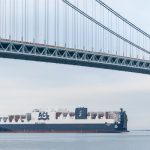
Container shipping lines operating between Asia and Europe are grappling with a growing gap between capacity and demand, prompting aggressive attempts to reverse the continued erosion of spot market rates.
With excess vessel space and limited cargo volumes, the trade lane remains heavily oversupplied, with an imbalance that has already caused rates to fall significantly since the start of the year.
Carriers are now attempting to apply significant general rate increases (GRIs), with several announcing rate increases for more than $3,000 per FEU from June 1, in a bid to arrest further decline. However, with the market already saturated and cargo demand flagging, these price hikes face an uphill battle.
From 1 June, carriers are targeting rate levels that sit well above current market averages. While freight levels from Asia to North Europe have recently hovered around 40% of what they were at the start of the year, proposed rates from leading lines aim to more than double current spot market figures, with similar increases planned on Asia-Mediterranean lanes.
The fall in demand is particularly noticeable among beneficial cargo owners (BCOs), many of whom are managing flat or reduced shipment volumes compared with last year’s already subdued levels.
The fundamental issue for the carriers lies in the persistent supply-demand mismatch. Capacity remains high due to continued vessel deliveries and a relatively modest number of blank sailings. Carriers are expected to deploy record levels of space on the Asia–North Europe route in May, with only a small fraction of this capacity withdrawn from the market.
This leaves an overhang of supply that continues to undermine rate recovery efforts.
The situation may be partially alleviated by a surge in redirected cargo from Asia that was originally bound for the United States. Following a temporary easing of China–US trade tariffs, some volumes have been rerouted toward Europe, the Middle East, and South America, removing some capacity and adding to the strain on already congested European port infrastructure.
Northern Europe’s primary gateways remain under pressure from persistent congestion, with delays caused by full container yards, ongoing labour issues, seasonal disruptions, and port engineering works. These operational constraints are compounding the difficulties carriers face in maintaining schedule reliability and managing capacity. And with additional holidays approaching, lines are anticipating further workforce constraints, with delays averaging 2-6 days.
As shipping lines push for higher rates, their success will largely depend on whether cargo volumes rebound in the coming weeks, but for now, the imbalance persists.
With congestion worsening and schedules becoming increasingly unreliable, shippers need accurate consignment tracking to mitigate disruption. Traditional carrier tracking systems often fail to provide reliable updates, leading to confusion and inefficiencies.
Our Clarity tracking system offers a superior solution, delivering enhanced track and trace capabilities, 100% validated from multiple sources for maximum accuracy. Whether ports are gridlocked or vessel schedules are in flux, Clarity ensures full visibility of your cargo every step of the way.
EMAIL Andy Costara to learn more about Clarity and keep your supply chain moving with confidence: https://globalf.com/visibility/





